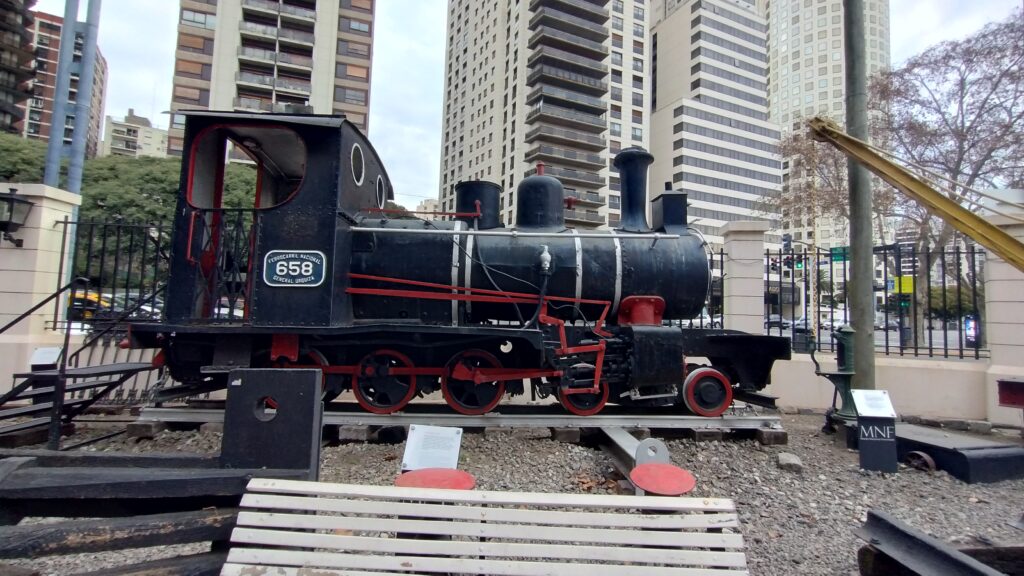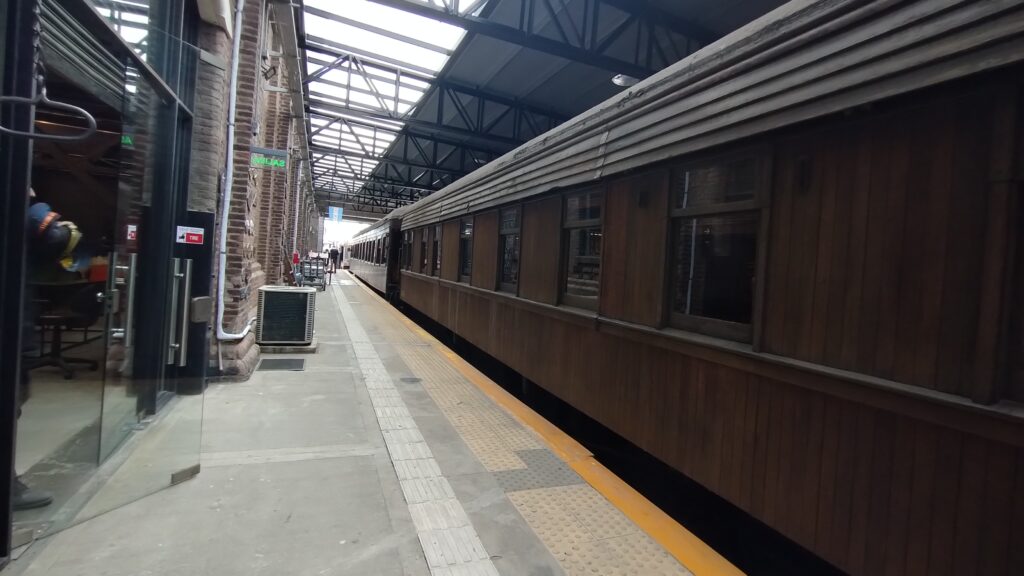Did you know that railways were very important in the history of Argentina and Buenos Aires? At a time when carriages and horseback mobility were the norm, railways contributed to the economic, productive and territorial growth of Argentina.
After the railways used to transport products, came the time of passenger trains. The 20th century witnessed the rise and decline of Argentine railways, which left an indelible mark on the memory of Argentine society.
The Raúl Scalabrini Ortiz National Railway Museum is committed to caring for and maintaining the railway heritage of Argentina. There it is not only possible to learn about the history of railways and tour some formations or carriages, but also to delve into the mechanics of trains and their evolution over time.
National Railway Museum (Buenos Aires): Everything You Need to Know Before Your Visit
What is the National Railway Museum of Buenos Aires?
The “Raúl Scalabrini Ortiz” Museum recreates the magical and attractive world of trains. Walking through its halls is like reconnecting with the epic history and testimonies of a transportation structure that was a significant factor in Argentina’s history, once ranking among the top ten systems in the world.
Appreciating these collections means valuing a theme that is active and integrative of national sovereignty, as well as Argentina’s economic, technological, and socio-cultural development.
Collections and Exhibits
The museum houses various objects, such as:
- A double command narrow-gauge coach from 1906 (used for railway staff transportation)
- A collection of magneto phones including a facsimile of the first device installed in Buenos Aires in 1882
- A series of old pendulum clocks
- Morse telegraph apparatus
- An impressive array of old lanterns
- Other valuable historical pieces
The museum also features unique pieces of international significance, such as:
- An early 20th-century railcar
- A broad-gauge steam locomotive called “PATRIA” from 1896
- A narrow-gauge Hunslet locomotive from 1919 that operated on the Correntino Economic Railway
Additionally, the museum holds objects tied to major historical events in Argentina, such as:
- The Presidential Car OF1 that transported Pope John Paul II during his 1982 visit
- An early 20th-century wooden presidential car
- The desk where the nationalization of Argentine railways was signed in 1948
Historical Railway Studies Center and Library
The museum includes a “Historical Railway Studies Center” and a library, where you can find documents, historical photographs, station inaugurations, railway branches, and various materials related to 155 years of railway activity.
Renovations and Visitor Experience
The museum’s facilities were completely renovated between 2017 and 2019, modernizing the existing hall and adding a large mezzanine, which increased its capacity and significantly improved the visitor experience with better distribution of the pieces.
Virtual Tour
The museum also offers a virtual tour with audio and text descriptions in Spanish and English, allowing railway history enthusiasts to visit the museum at any time, from anywhere in the world.
Visiting Information
The National Railway Museum is open every day from 10 AM to 8 PM. Admission fees vary for residents, foreigners, and minors (ages 6 to 12). No prior reservation is necessary to visit the museum.
Mission and Significance
The National Railway Museum aims to preserve, restore, and exhibit the vast historical and cultural heritage of Argentine trains. The history of Argentine railways includes periods of emergence, peak, splendor, and decline.
Although it remains an important mode of transport and the railway network is established, it has never fully reached its potential. Today, the railway is highly valued in Buenos Aires, although its significance is less in other Argentine provinces where the railway had little or no impact.
Many people have an emotional connection to Argentine railways, either from having worked on them (or their relatives) or from memories of traveling by short or long-distance trains.

Where is the National Railway Museum located?
The National Railway Museum is located on Avenida del Libertador, right next to the Retiro train station.
This area of the Retiro neighborhood has railway lines from one of the most important branches in Buenos Aires.
Nearby is Avenida 9 de Julio.
It is a busy central area on weekdays, though the volume of vehicles and people can decrease significantly on weekends.
Heading north on Avenida del Libertador leads to the Recoleta neighborhood, while heading the other way takes you to Puerto Madero.
It is an ideal place to visit the museum and then enjoy a coffee or bar in the area.
In addition to Avenidas 9 de Julio and del Libertador, other nearby roads include Avenidas Santa Fe, Córdoba, and Leandro N. Alem.
How to get to the National Railway Museum?
The location of the National Railway Museum is ideal for arriving by various means of transportation.
By Bus
Several bus lines run through the area, including 61, 92, 93, 100, 130, and 152.
By Subway
The subway is another quick and convenient option, as lines C and E have a stop at the Retiro train station. From there, you only need to walk about four blocks along Av. del Libertador.
By Train
You can also take advantage of the railways, especially the Mitre and San Martín lines, which have their terminals at Retiro Station.
By Bicycle
Keep in mind that Avenida del Libertador, at least in that section, has a protected bike lane. So if you travel by bicycle in the city, you can easily reach the museum using this transportation method.

Why visit the National Railway Museum?
Learn About the History of Railways in Argentina
The railways in Argentina were crucial for economic development. They were the first mass transportation means that allowed the export of local production to foreign markets, with the Port of Buenos Aires being one of the most important exit points.
The railways also played a significant role in territorial and population expansion. Although the railway network converges in Buenos Aires, it made it possible to reach remote areas of Argentina.
In the museum, you will see the rise and gradual disappearance of this transportation method, which lost prominence to vehicular transport.
Discover the Mechanics of Trains
The museum not only offers a journey through time but also provides knowledge about train mechanics, which require qualified personnel.
You will learn about the different types of railway formations and how train transport was organized: communication, signaling, and everything related to safety and logistics.
Explore Vintage Train Formations
Anyone feels fascinated by exploring the interior of a passenger train, especially when the formation is vintage and designed like a small apartment.
In the museum, you can enter and explore classic wooden train formations with their cabins, bathrooms, and private lounges, similar to those you might see in movies but in real life.
Take Photos and Videos
The National Railway Museum has many things to photograph and film. The place is well-organized for you to take pictures from the moment you enter until you leave. You can take photos of museum pieces, models, and even the train formations on the platform outside.
Additionally, the museum offers the possibility of taking a “vintage” photograph, both in digital and printed formats.


